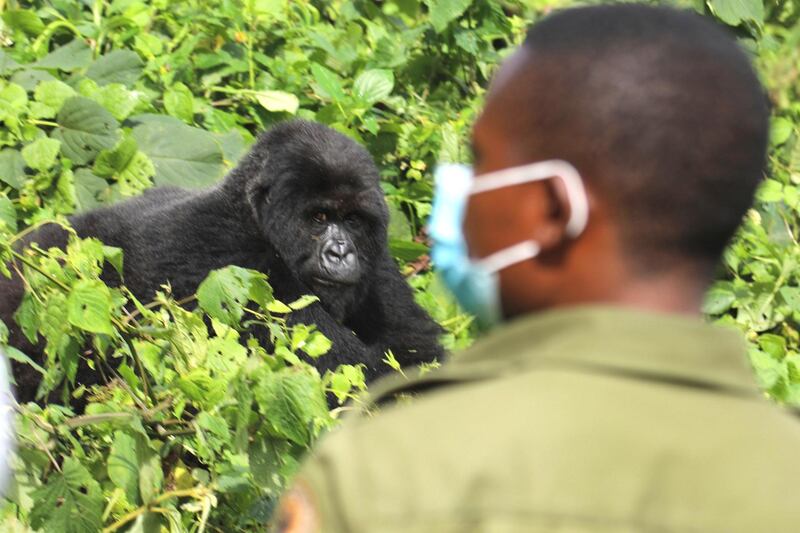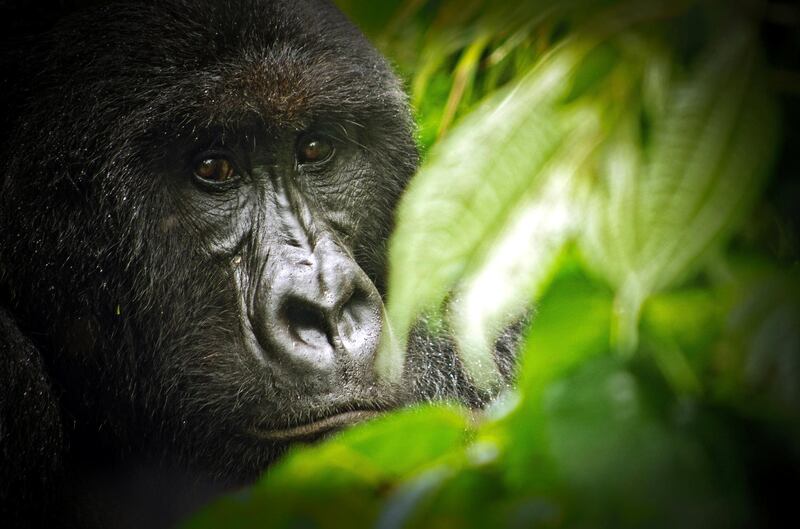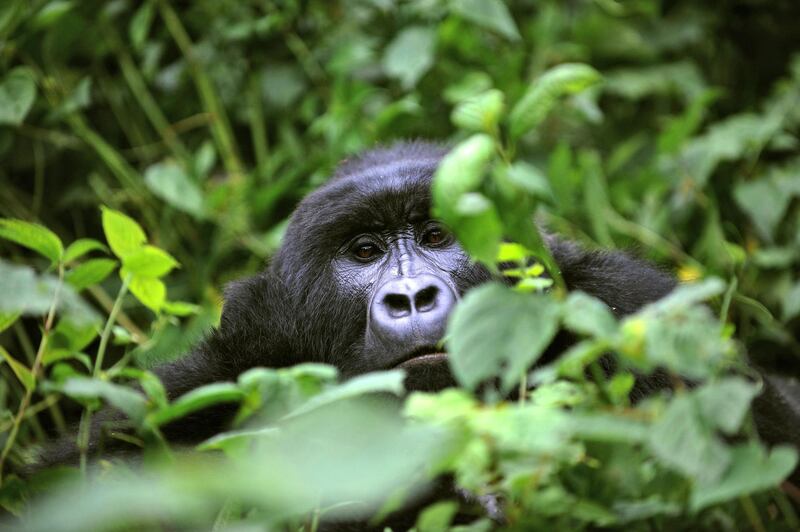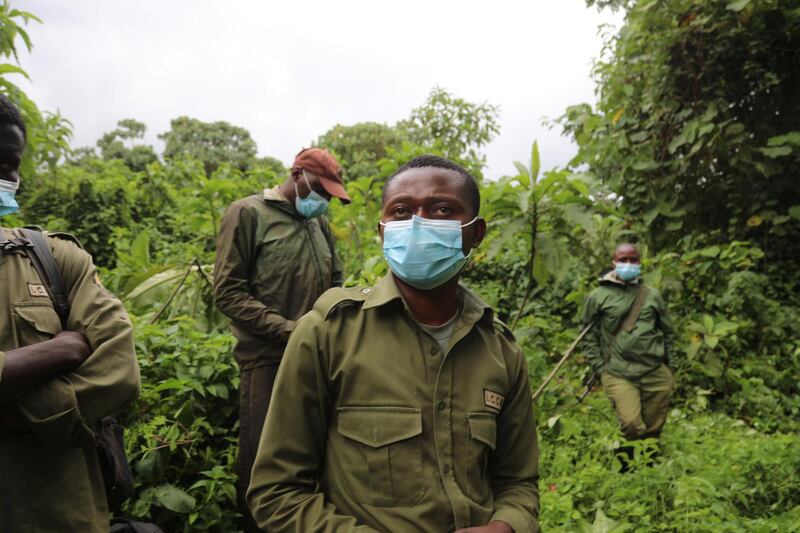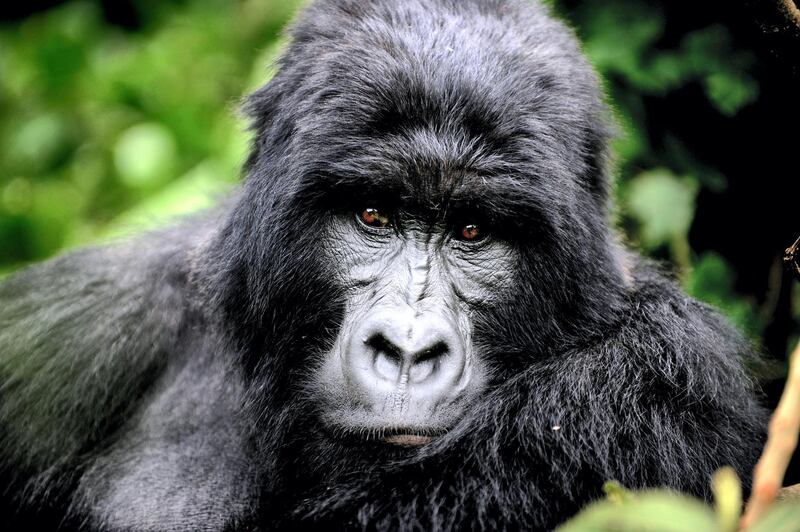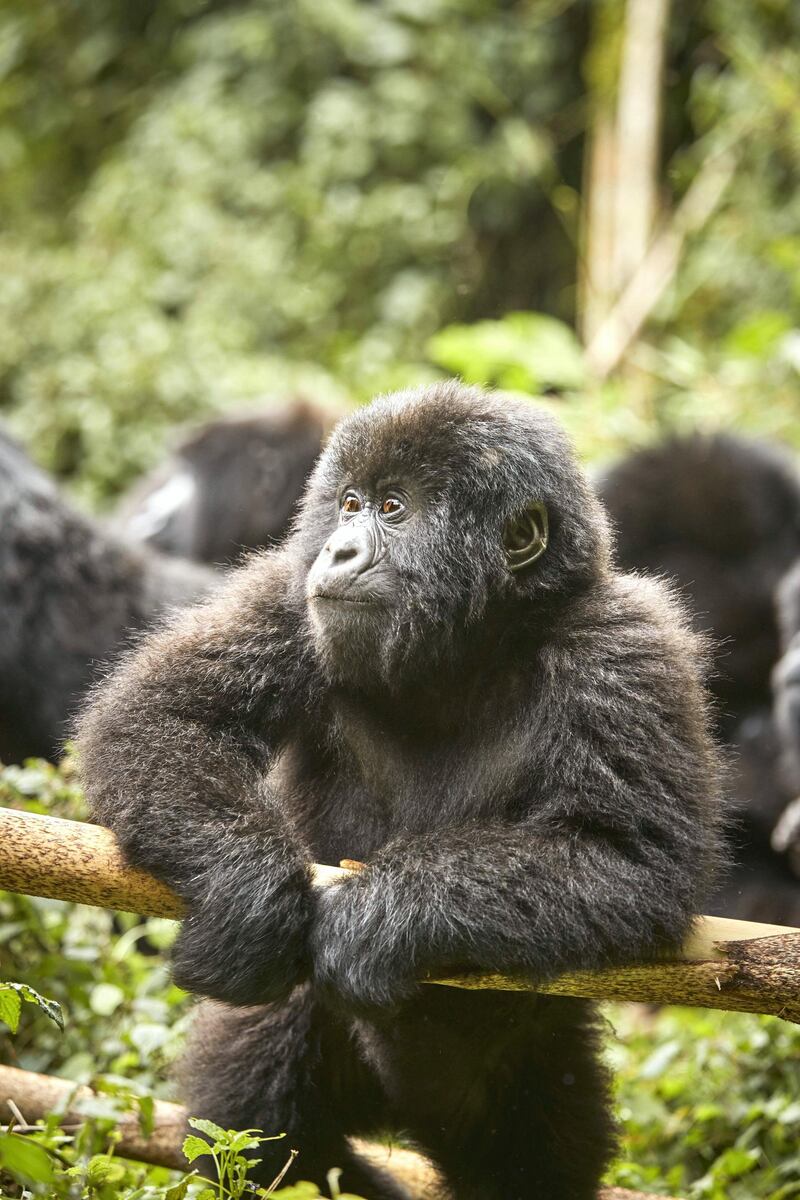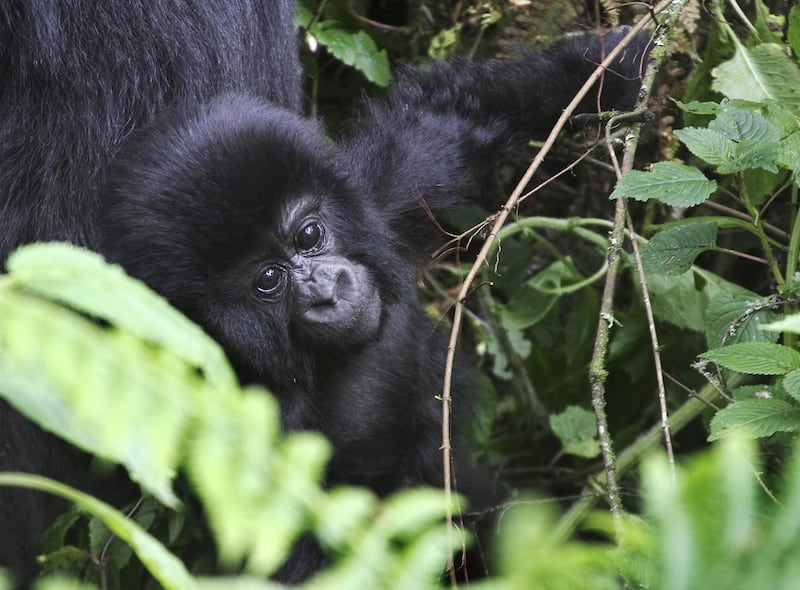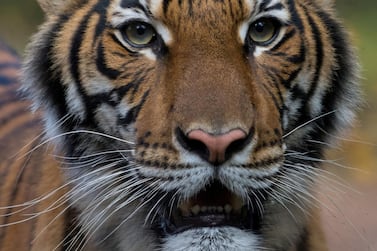“Keep your distance!” whispered Benoit Ishiba, as a 200-kilogram silverback mountain gorilla leisurely strode past through a sprawling cloud rainforest. “It’s for his safety as much as it is for yours.”
Following behind came a mother with a black-haired baby clinging to her. The pair, who belong to a family of 24 gorillas in the Democratic Republic of Congo’s Virunga National Park, scoped out a patch to sit down and began snacking on some green vegetation.
“This will be the last visit for a long time,” said Ishiba, a guide who has been working in the park since 2014. “We cannot risk the gorillas catching the disease from tourists.”
Park authorities last month announced that all visits to Virunga would be suspended until June, after advice from scientific experts that the endangered mountain gorillas would likely be susceptible to coronavirus. The park closed on the same afternoon The National visited, March 24.
Confirmed cases of the respiratory virus have risen sharply in the central African state – it now has 161 cases and 18 deaths – since the first positive test was recorded on March 10, but the Covid-19 pandemic has since reached North Kivu, the province in which Virunga National Park is based.
“We don’t know how pathogenic the virus could be in the gorillas, but there is a risk it could be very serious,” said Fabian Leendertz, a world-renowned expert on primate diseases and head of the Leendertz Lab in Berlin.
“These great apes are our closest living relatives and there is evidence that the transmission of even mild human pathogens to apes can have severe consequences.”
Even with #COVID19 lockdown measures, Rwanda, Uganda & DRC recognize the critical importance of our work protecting #gorillahealth. Our #veterinarians have special permission to perform health monitoring visits. Read more: https://t.co/nRNtNDScT7 pic.twitter.com/LN4wlopnpE
— Gorilla Doctors (@GorillaDoctors) April 1, 2020
In correspondence published in the journal Nature last month, Leendertz called for the government to apply the International Union for Conservation of Nature's best-practice guidelines for health monitoring and disease control, which recommends the distance normally kept between people and great apes should increase from 7 metres to 10 metres.
Primates can catch respiratory illnesses from humans, and mountain gorillas, who share 98 per cent of their DNA with humans, can die even from the common cold, endangered species protection group the World Wildlife Fund has found. In Virunga, park rangers and visitors have always worn face masks when visiting the mountain gorillas.
"We are worried by this outbreak," said Dr Eddy Kambale, head veterinary surgeon for Gorilla Doctors in Goma, a non-profit veterinary organisation that protects and cares for gorillas in DRC, Rwanda, and Uganda. "If it reaches them, it would be almost impossible to contain it – especially the wild ones not habituated to human presence."
Gorilla Doctors is working with park officials to educate the local population on how zoonotic disease transmission – spreading an infection from humans to animals or vice versa – usually happens.
Dr Kambale, who performs operations and postmortems on gorillas, is also part of a team of 14 vets across Africa monitoring the development of the disease. "Everyday we share updates on what is happening," he said.
Established in 1925, Virunga is Africa's oldest national park and covers nearly 20,700 square kilometres. But the Unesco World Heritage park's soaring volcanic mountain ranges and endemic species has been on the List of World Heritage in Danger since 1994 because of violent conflict, large-scale poaching and illegal resource extraction.
Mountain gorillas, who have thick, long fur and typically live in altitudes between 2,400 metres and 4,000 metres, are only found in the Virunga Mountain region that straddles the border of the Democratic Republic of Congo, Rwanda and Uganda, and the Bwindi Impenetrable National Park in Uganda.
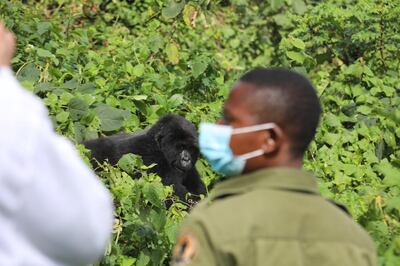
In 1981, there were only an estimated 254 mountain gorillas left in the world, and the International Union for Conservation of Nature classified the species as "critically endangered". But after intensive conservation efforts, numbers rose to just over 1,000, according to a survey in 2018, about 300 of whom are found in the Congo.
The park rangers protecting these gorillas, however, are equally threatened. More than 170 of them have been killed in the line of duty in the past 20 years, largely at the hands of the estimated 100 armed rebel groups and local militias that fight for mineral resources in the area and poach wildlife.
“The gorillas move five kilometres a day on average but if they’re threatened they sometimes climb all the way over there,” said Mr Ishiba, gesturing at Mount Mikeno, a 4,437 metre-high dormant volcano shrouded in mist. “And militants don’t tend to go over there, so they’re safer.”
Further trouble arrived in August 2018 with the outbreak of the deadly Ebola virus in North Kivu, which has to date killed thousands of people. Although no gorillas have yet been infected they are thought to be at high risk, with a third of the global Western lowland gorilla population wiped out by Ebola in the early 2000s. Fears are the coronavirus could cause the same damage.
Peter Walsh, a primate ecologist who worked on developing an Ebola vaccine for primates at the University of Cambridge, said "the default assumption” is that the effects of Covid-19 will be the same in gorillas and humans, although particular behaviours of the close-knit gorilla families could see it spread easily.
“In the short term, a vaccine is not a plausible option given the likely time course of the pandemic and attitudes about vaccines,” he said. “People would go absolutely berserk if you tried to give a vaccine to gorillas that was not available to humans in the area.”
But in Virunga, a particular concern for the mountain gorillas is the high risk of human contact because poor local communities often illegally enter the park to cultivate the land and chop down wood to make charcoal.
“They’ve entered in through here recently,” said Mr Ishiba, pointing to a hole dug under the electric fence that lines the perimeter.
Just minutes later, Mr Ishiba stoppped besidesa dense mass of bamboo, and made a deep, low growl – a way of signalling to the gorillas that he is a friend. Slowly cutting away the bush with a machete, he revealed a trio of adolescents inspecting each other’s fur.
“We need to protect our brothers,” he said.
